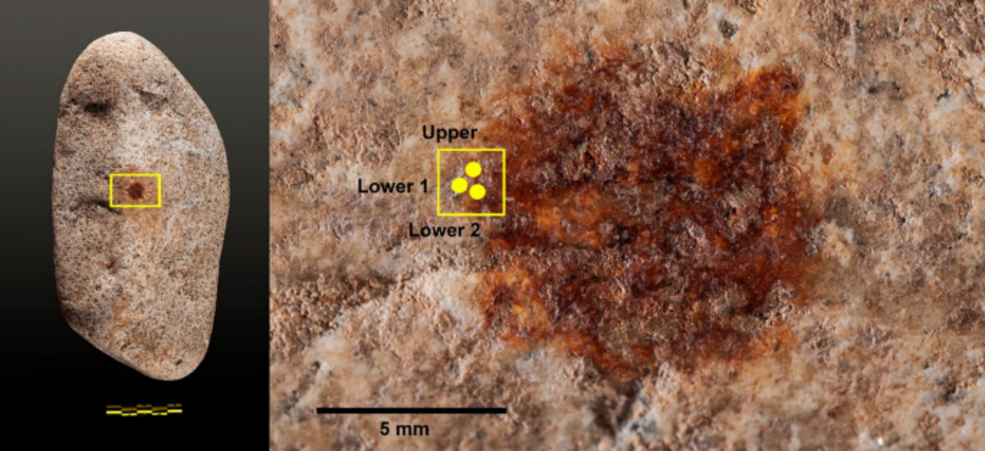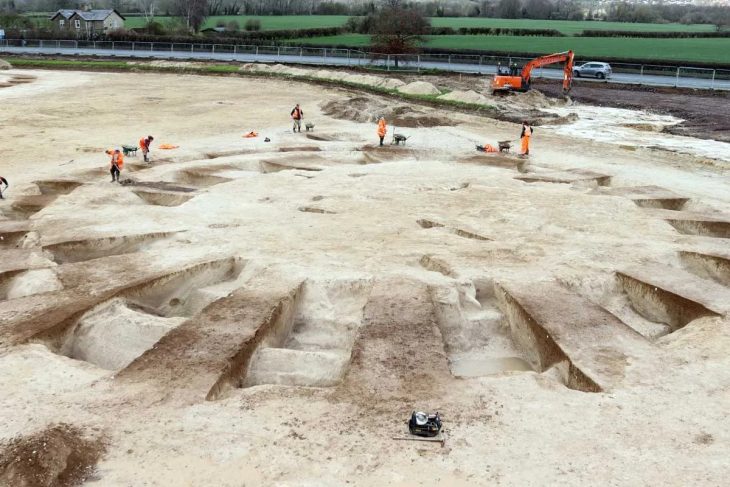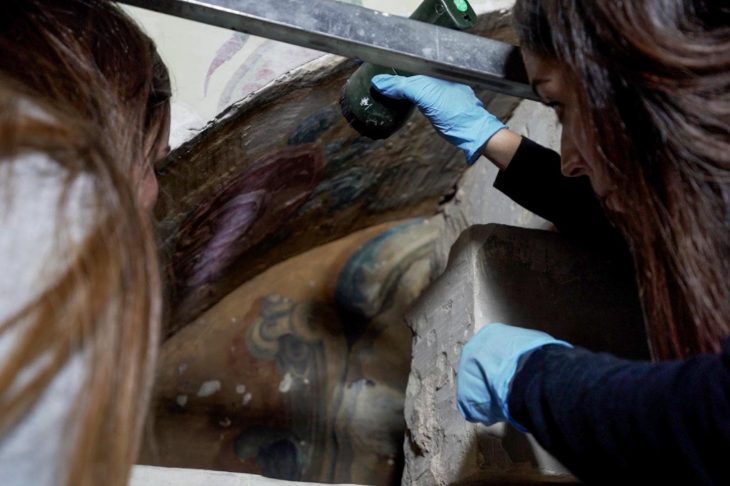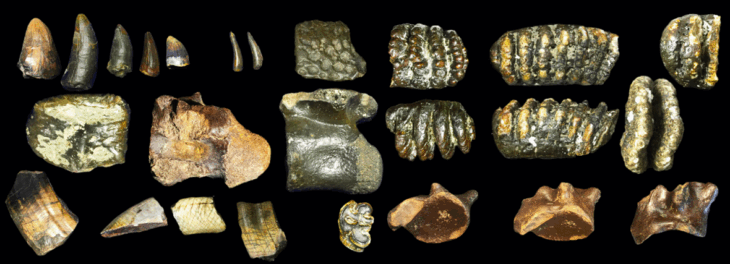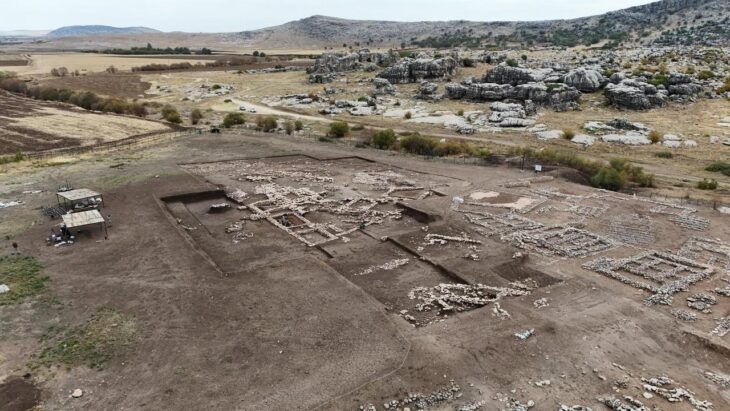New analysis reveals that a pebble marked with ochre and a fingerprint could be the earliest known example of transportable art in European prehistory.
In an extraordinary discovery that reshapes our understanding of early symbolic behavior, archaeologists in Spain have uncovered what may be the oldest painted portable object ever found in Europe. A small pebble, marked with red ochre and bearing a partial human fingerprint—believed to be that of a Neanderthal—has been identified as a potential piece of transportable art dating back around 50,000 years.
Unearthed at the San Lázaro rock-shelter in Segovia, Central Spain, this object may be the oldest known piece of painted portable art in Europe and provides striking evidence of Neanderthal symbolic behavior.
At first glance, the artifact appears to be an ordinary river pebble. But under detailed scientific analysis, it reveals a carefully placed red ochre dot and, remarkably, a partial fingerprint embedded in the pigment layer. Multispectral imaging and dermatoglyphic analysis suggest that the mark is not accidental but the result of deliberate application, pointing to intentional symbolism rather than utilitarian function.
According to Professor María de Andrés-Herrero of the Complutense University of Madrid, who co-authored the study, the pebble was discovered in 2022 beneath approximately 1.5 meters of sediment. The sediment layer is believed to have been deposited by Neanderthal groups that inhabited the region during the Middle Paleolithic. Interestingly, the pebble’s geological origin traces back to the Eresma River, located over five kilometers from the San Lázaro site—indicating that it was deliberately transported, possibly for its shape, texture, or symbolic potential.
📣 Our WhatsApp channel is now LIVE! Stay up-to-date with the latest news and updates, just click here to follow us on WhatsApp and never miss a thing!!
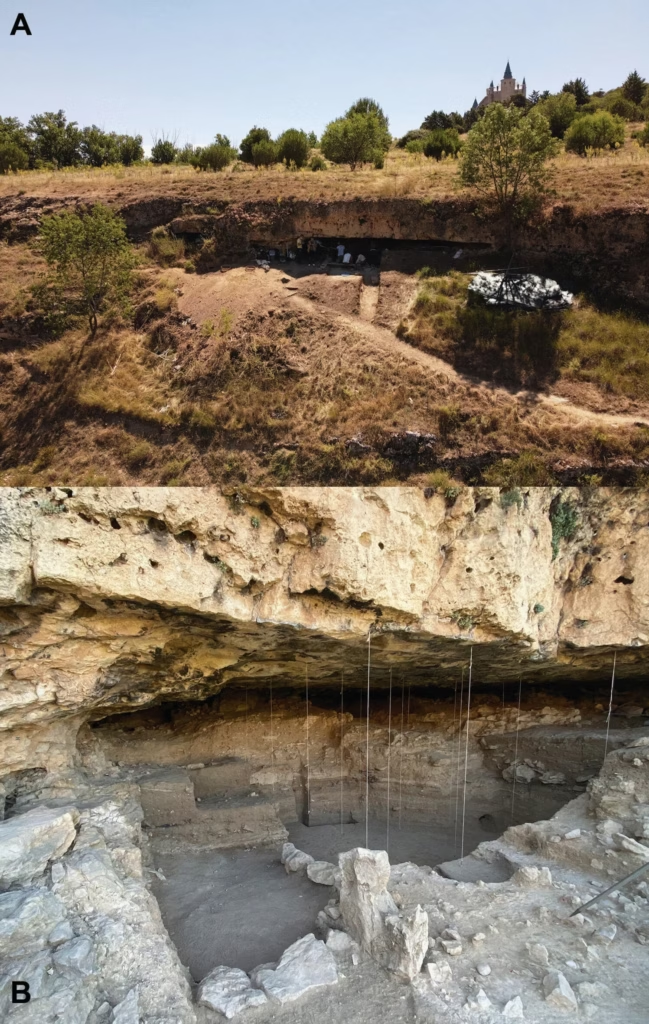
Potentially the Oldest Portable Art in Europe
At a press conference, Spanish heritage official Gonzalo Santonja emphasized the find’s significance, stating it “may be the oldest painted portable object ever discovered in Europe.” He added that it could also be the only known example of transportable art made by Neanderthals—an idea that challenges conventional notions of their cognitive capabilities and creative expression.
The discovery has sparked global interest in prehistoric studies, as it suggests a previously unrecognized depth of Neanderthal symbolic behavior. The use of pigment combined with a fingerprint implies a deliberate act, one that may have held ritual, communicative, or artistic meaning.
Redefining Neanderthal Intelligence
For decades, Neanderthals were depicted as cognitively inferior to Homo sapiens—brutish survivors incapable of art or symbolism. However, this finding joins a growing body of archaeological evidence suggesting otherwise. Previous discoveries, including cave paintings, shell ornaments, and burial practices, have already suggested complex symbolic behavior. However, the San Lázaro pebble—with its human touch preserved in ochre—offers an unprecedented level of intimacy with Neanderthal expression.
The intentional application of pigment and the act of leaving a fingerprint imply a self-awareness and desire to leave a mark—literally and metaphorically. These actions suggest an advanced cognitive capacity for symbolic thought, abstract reasoning, and possibly even ritual behavior, once thought exclusive to Homo sapiens.
A New Chapter in Human Evolution
The significance of this archaeological discovery extends beyond Neanderthal studies. It prompts broader questions about the origins of symbolic behavior in early humans and the diversity of cultural expression in prehistoric Europe. Could symbolic behavior have evolved independently in different hominin species? Or was there a shared cultural heritage among coexisting human groups?
If Neanderthals were capable of creating symbolic portable art, then the emergence of culture must be viewed as a more complex and widespread process than previously believed. This opens the door to reevaluating other Middle Paleolithic finds under a symbolic lens.
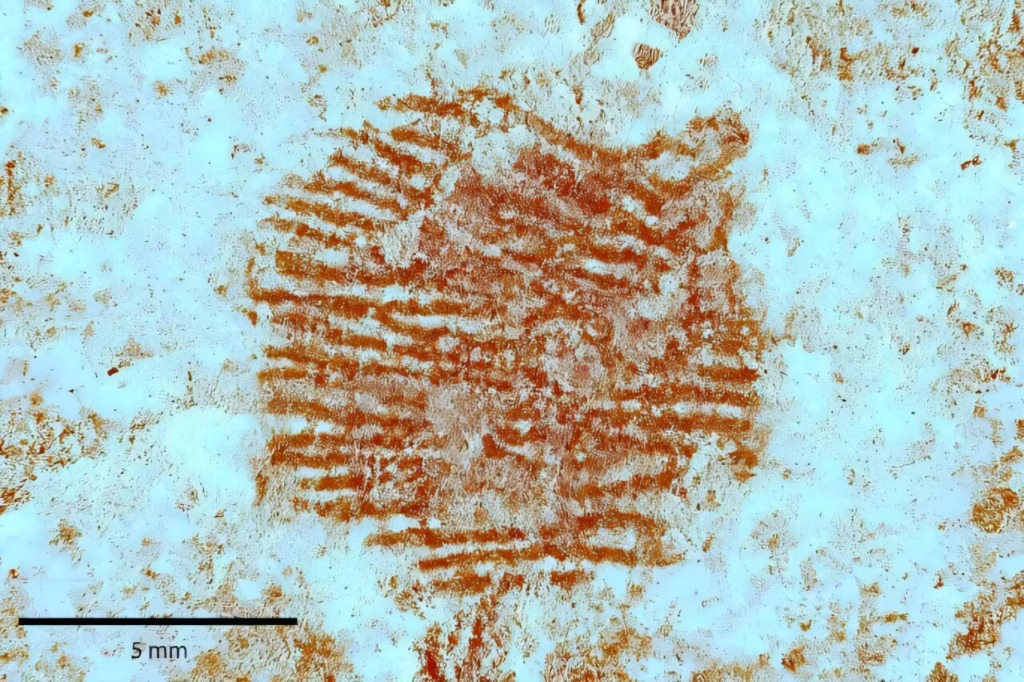
Looking Forward: More to Discover
The San Lázaro site is now a high-priority location for further archaeological excavation. Researchers hope to uncover additional artifacts that could offer more context about the cognitive and cultural life of Neanderthals. With the integration of cutting-edge technologies like 3D imaging and chemical residue analysis, future studies may reveal even more compelling evidence of Neanderthal creativity.
Conclusion
The ochre-stained pebble with a Neanderthal fingerprint is not just a historic find—it is a narrative stone, echoing the inner life of a species once dismissed as incapable of symbolic thought. As science continues to shed light on Neanderthal behavior, the line between “them” and “us” grows increasingly blurred.
This simple pebble, carried miles from its riverbed and marked with ochre by a Neanderthal hand, is not just a relic—it is a message from the deep past. It forces us to reconsider what it means to be human and reminds us that the roots of art, culture, and identity may run far deeper—and broader—than once imagined.
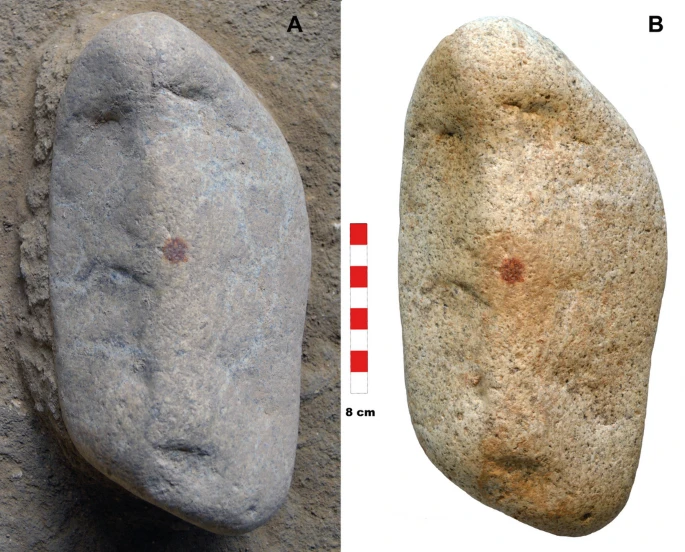
This discovery marks a pivotal moment in human prehistory and invites us to appreciate the richness and depth of Neanderthal culture. It is a profound reminder that the roots of human creativity and expression may stretch further back—and across more branches of our evolutionary family—than we ever imagined.
Álvarez-Alonso, D., de Andrés-Herrero, M., Díez-Herrero, A. et al. More than a fingerprint on a pebble: A pigment-marked object from San Lázaro rock-shelter in the context of Neanderthal symbolic behavior. Archaeol Anthropol Sci 17, 131 (2025). https://doi.org/10.1007/s12520-025-02243-1
Cover Image Credit: Archaeological and Anthropological Sciences (2025). DOI: 10.1007/s12520-025-02243-1

